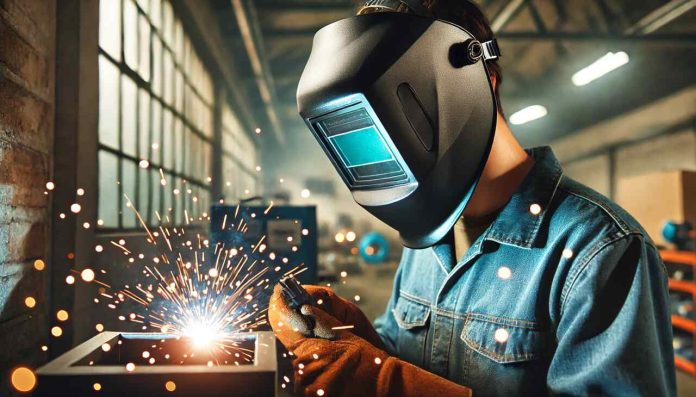Every welder needs a safety helmet to protect their eyes and face from debris, light, and heat. The helmet allows them to work comfortably and efficiently without fear of harming themselves. Why is this helmet essential, and what should a person look for when making this purchase?
Why Welding Helmets are Needed?
High-temperature equipment is used in welding, and the machines produce intense radiation. When people don’t have a safety helmet, their eyes and skin may be damaged. The helmet protects them from burns, eye damage, and other injuries. Lincoln helmets safeguard from the bright light emitted from the machine while ensuring sparks and flying debris don’t reach the face. A properly fitted helmet also reduces distractions and fatigue. Look for the following features when making this purchase.
Auto-Darkening Features
When choosing a welding helmet, look for one with auto-darkening technology that will adjust the lenses to the brightness of the welding arc. The individual will be able to see clearly while remaining safe and comfortable. Ensure the lenses darken properly to ensure the highest level of protection.
Reaction time is the span between detecting the welding arc and the lens darkening. Look for a reaction time of less than 1/25,000 seconds, as slower reaction times can cause discomfort and eye fatigue.
Helmet Shade
Individuals who typically complete light welding tasks using a TIG welder need a helmet shade between 9 and 13. MIG and stick welders need a higher level of protection and should choose a shade between 10 and 13. The shade protects the eyes, so more is better.
Comfort
Nobody wants to wear an uncomfortable helmet, so ensure the proper fit before purchasing. The helmet should be snug and comfortable, and many now have adjustable headgear and padding so each person gets the right fit. An uncomfortable helmet will distract the welder and could lead to injuries.
Durability
The helmet must also be durable, as it will be exposed to intense heat and flying debris. To reduce the risk of injury, confirm that it is made from impact-resistant materials. Many welders prefer helmets made of high-quality plastic because they are lightweight while providing the necessary protection.
UV and IR Protection
The welding helmet protects the individual from UV and IR radiation. All welding arcs emit radiation harmful to human eyes, so a person’s vision is at risk without the helmet. When choosing an auto-darkening helmet, look for one that meets or exceeds welding safety standards. Two standards to look for are ANSI Z87.1 and ISO 12100, which confirm that the helmet offers the highest level of protection.
Visibility
who cannot see clearly when working are at greater risk of injury. Look for polycarbonate or high-impact glass helmet lenses to ensure clarity of sight and the highest protection level. The lenses should have a wide viewing area and resist scratches, so they won’t need to be replaced regularly.
Weight
One thing to consider when purchasing a welding helmet is the weight. A heavy helmet can strain the neck, so individuals should try several helmets to find one that feels balanced and tight on the head. Many people assume this isn’t an issue, but a heavy helmet can throw a person’s posture off, leading to discomfort.
Every welder must prioritize safety. The correct welding helmet will protect the eyes and skin from harm. When choosing this helmet, ensure it meets safety standards and has other desired features. The right helmet will always be worn, offering the highest level of protection for the user.
